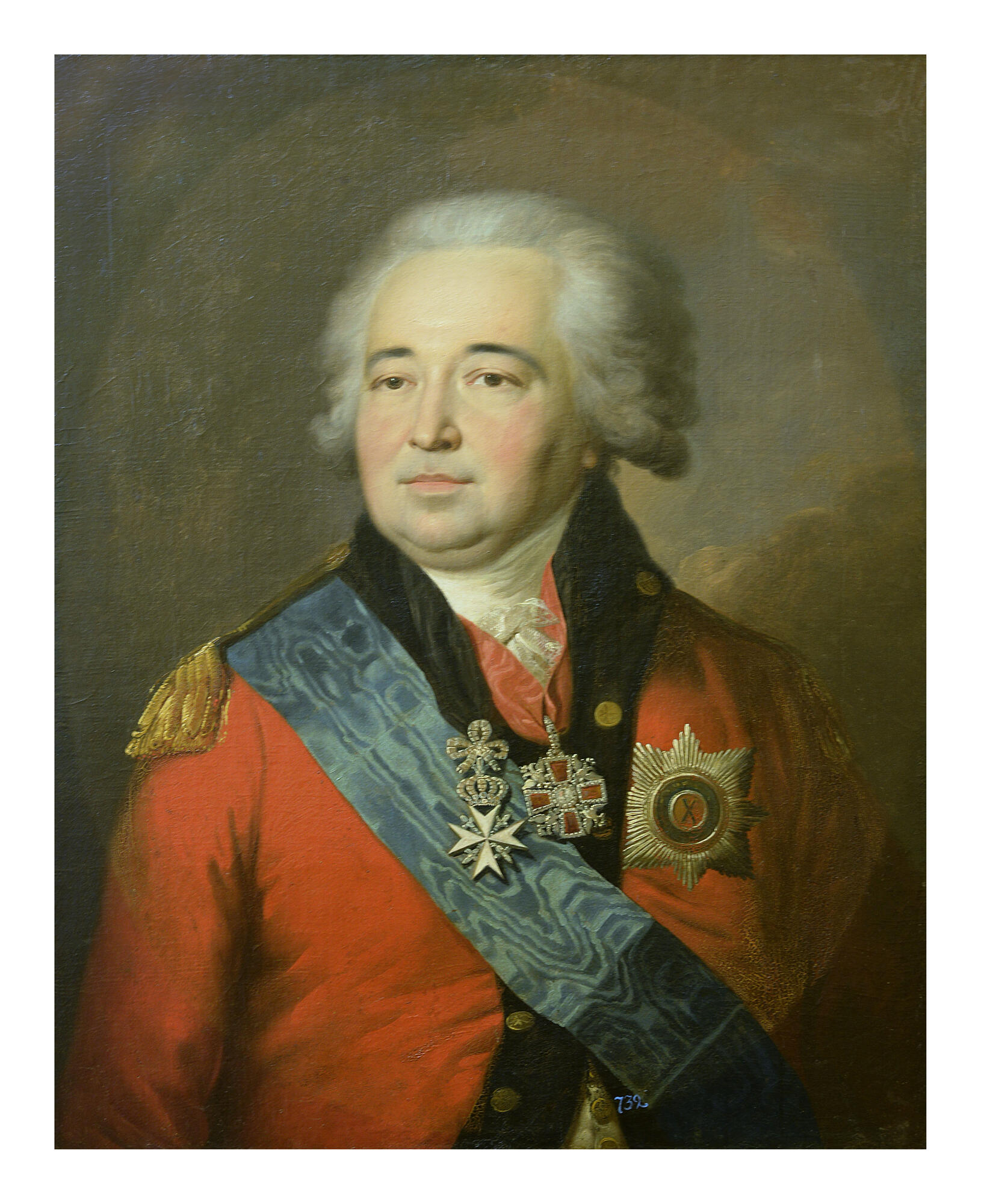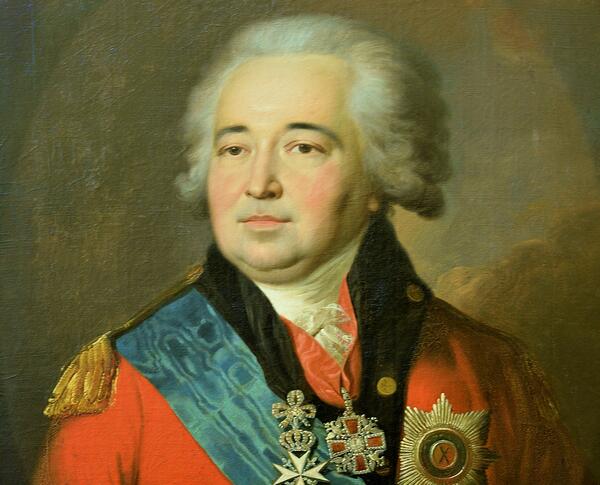The ceremonial portrait by an unknown artist depicts a statesman and diplomat, Prince Alexander Kurakin. He is depicted in a ceremonial court costume, decorated with a St. Andrew’s ribbon and numerous orders.
The ceremonial portrait is one of the genres of the so-called court painting. It was quite popular in the Russian Empire in the 18th century.
Specialists believe that Kurakin’s portrait came to the museum from the estate of his brother Alexeiafter the revolution. The Kurakins obtained their first land in the Oryol governorate in the 17th century. Alexei Kurakin became one of the richest local landlords, owning over 16 000 dessiatins (an archaic land measurement used in tsarist Russia) of land and thousands of serfs. The Kurakins built 53 churches in 46 villages.
Prince Alexander Kurakin was born in Moscow in 1752. His grandmother’s brother, Count Nikita Panin, took him and brought him to the capital, to St. Petersburg. At that time, Panin was the mentor of the future Emperor Paul I, so Alexander grew up with the tsesarevich (the title of the heir apparent or presumptive in the Russian Empire).
During the reign of Catherine the Great, Kurakin was in disfavor because of his association with the Masonic lodge and even for a time was exiled from St. Petersburg to the countryside. However, after the accession of Paul I, the prince returned to the capital and worked on important government posts for a long time. He headed the Collegium of Foreign Affairs, was in charge of ambassadorial affairs in Paris, and was a member of the council to the emperor. During his service, Kurakin became a Knight of all Russian orders.
According to his contemporaries, the prince was a kind man, but very vain. For Kurakin’s passion for luxury, he got the nickname “Diamond Prince”.
Dmitri Bantysh-Kamensky, a historian, recalled that Kurakin
The ceremonial portrait is one of the genres of the so-called court painting. It was quite popular in the Russian Empire in the 18th century.
Specialists believe that Kurakin’s portrait came to the museum from the estate of his brother Alexeiafter the revolution. The Kurakins obtained their first land in the Oryol governorate in the 17th century. Alexei Kurakin became one of the richest local landlords, owning over 16 000 dessiatins (an archaic land measurement used in tsarist Russia) of land and thousands of serfs. The Kurakins built 53 churches in 46 villages.
Prince Alexander Kurakin was born in Moscow in 1752. His grandmother’s brother, Count Nikita Panin, took him and brought him to the capital, to St. Petersburg. At that time, Panin was the mentor of the future Emperor Paul I, so Alexander grew up with the tsesarevich (the title of the heir apparent or presumptive in the Russian Empire).
During the reign of Catherine the Great, Kurakin was in disfavor because of his association with the Masonic lodge and even for a time was exiled from St. Petersburg to the countryside. However, after the accession of Paul I, the prince returned to the capital and worked on important government posts for a long time. He headed the Collegium of Foreign Affairs, was in charge of ambassadorial affairs in Paris, and was a member of the council to the emperor. During his service, Kurakin became a Knight of all Russian orders.
According to his contemporaries, the prince was a kind man, but very vain. For Kurakin’s passion for luxury, he got the nickname “Diamond Prince”.
Dmitri Bantysh-Kamensky, a historian, recalled that Kurakin



